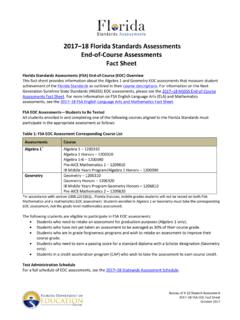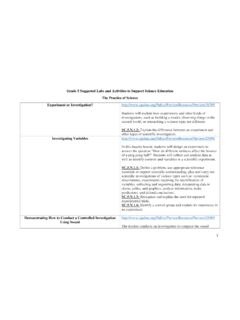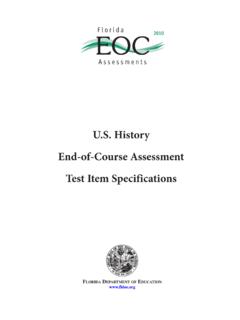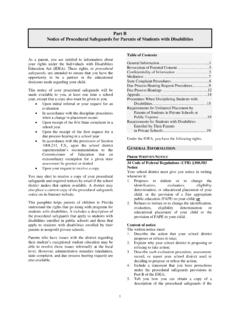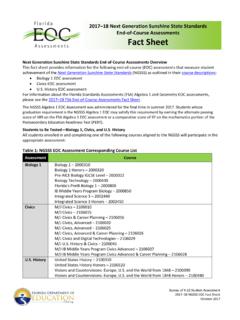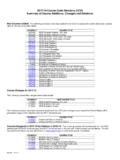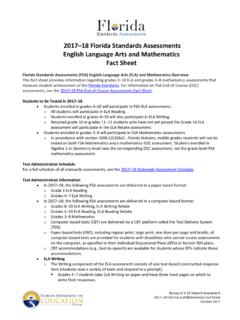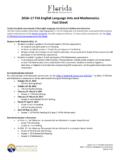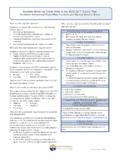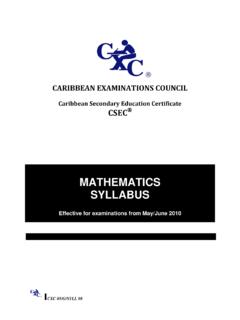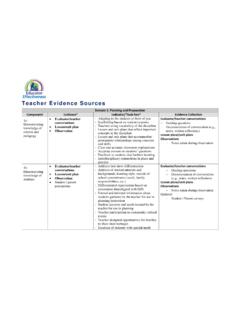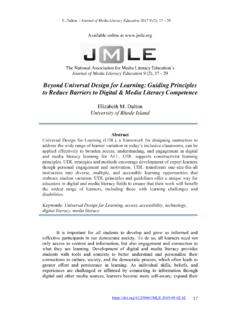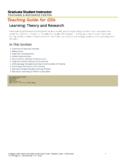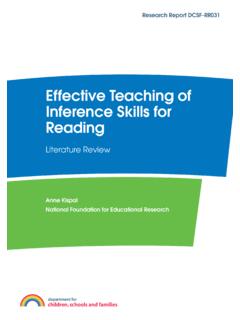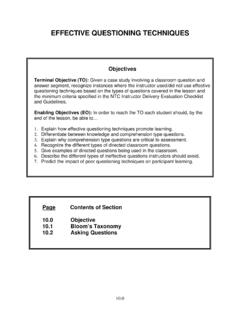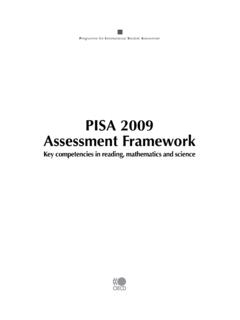Transcription of READING ENDORSEMENT COMPETENCIES
1 1 READING ENDORSEMENT COMPETENCIES 2011 guiding Principle: Teachers will understand and teach READING as an ongoing strategic process resulting in students comprehending diverse text. Teachers will understand how writing, listening, and speaking support the teaching of READING , and how family involvement supports student achievement in READING . Teachers will understand that all students have instructional needs and apply the systematic problem solving process: use data to accurately identify a problem, analyze the problem to determine why it is occurring, design and implement instruction/interventions, and evaluate the effectiveness of instruction/interventions.
2 Teachers will understand that the problem solving process is recursive and ongoing, utilized for effective instructional decision making. Competency 1: Foundations of READING Instruction 60 In-service Hours Teachers will develop substantive understanding of six components of READING as a process: comprehension , oral language, phonological awareness, phonics, fluency, and vocabulary. The total inventory of Performance Indicators (A-G) satisfies Competency 1. Performance Indicator A: comprehension Understand that building oral and written language facilitates comprehension .
3 Understand the importance of learning syntax, semantics, pragmatics, vocabulary, and text structures required for comprehension of formal written language of school, often called academic language. Understand the impact of text upon READING comprehension ( , genre, readability, coherence, text structure, and text complexity). Understand how the interaction of reader characteristics, motivation, purpose of READING , and text elements impacts comprehension and student engagement. Identify cognitive targets ( , locate/recall; integrate/interpret; critique/evaluate) and the role of cognitive development in the construction of meaning of literary and informational texts.
4 Understand READING as a process of constructing meaning from a wide variety of print and digital texts and for a variety of purposes. Understand the READING demands posed by domain specific texts. Understand that effective comprehension processes rely on well developed language, strong inference making, background knowledge, comprehension monitoring and self-correcting.
5 Understand how English language learners linguistic and cultural background will influence their comprehension . Understand the role of formal and informal assessment of comprehension in making instructional decisions to meet individual student needs. 2 Performance Indicator B: Oral Language Understand how the students development of phonology, syntax, semantics, and pragmatics relates to comprehending written language.
6 Understand the differences between social and academic language. Understand that writing enhances the development of oral language. Understand that the variation in students oral language exposure and development requires differentiated instruction. Recognize the importance of English language learners home languages, and their significance for learning to read English. Understand the role of formal and informal oral language assessment to make instructional decisions to meet individual student needs.
7 Performance Indicator C: Phonological Awareness Understand phonology as it relates to language development and READING achievement ( , phonological processing, phonemic awareness skills, phonemic analysis and synthesis). Recognize the phonological continuum beginning with sensitivity to large and concrete units of sound ( , words & syllables) and progressing to small and abstract units of sound (onset-rimes and phonemes). Understand that writing, in conjunction with phonological awareness, enhances READING development.
8 Distinguish both phonological and phonemic differences in language and their applications in written and oral discourse patterns ( , language & dialect differences). Understand how similarities and differences in sound production between English and other languages affect English language learners READING development in English. Understand the role of formal and informal phonological awareness assessment to make instructional decisions to meet individual student needs.
9 Performance Indicator D: Phonics Understand that phonological units (words, syllables, onset-rimes, and phonemes) map onto orthographic units (words, rimes, letters) in alphabetic languages. Understand sound-spelling patterns and phonics (grapheme-phoneme correspondence rules). Understand structural analysis of words. Understand that both oral language and writing can be used to enhance phonics instruction. Understand the role of formal and informal phonics assessment to make instructional decisions to meet individual student needs.
10 3 Performance Indicator E: Fluency Understand that the components of READING fluency are accuracy, expression, and rate which impact READING endurance and comprehension . Understand that effective readers demonstrate flexibility by adjusting their READING rate to accommodate the kinds of texts they are READING in order to facilitate comprehension . Understand the relationships among fluency, word recognition, and comprehension .
